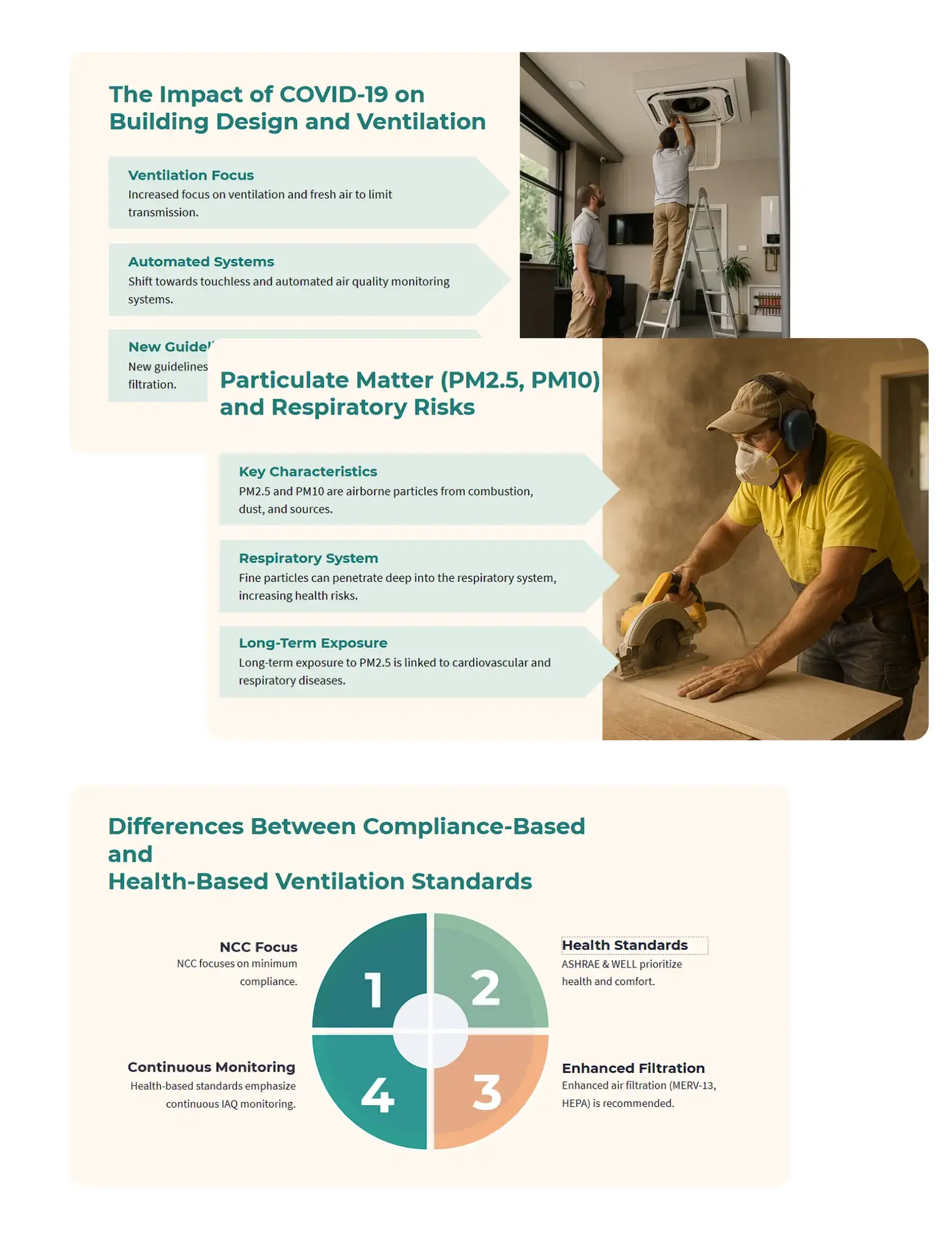Course Content
★★★★★
This CPD session explores indoor air quality (IAQ) and ventilation strategies in the context of post-pandemic building design, focusing on how design and mechanical systems can enhance occupant health and well-being. The session is designed for architects, building designers, mechanical engineers, and facility managers at an intermediate level. The course aligns with Australian industry regulations, including NCC 2022, NatHERS, and ABCB guidelines, and incorporates real-world case studies and compliance pathways to support practical implementation. Participants will gain insights into smart ventilation technologies, filtration systems, and IAQ monitoring tools that can improve air quality while optimizing energy efficiency.

This session is designed for

Architects

Building Designers

Mechanical Engineers

Facility Managers
By the end of this course, participants will understand the key factors influencing indoor air quality (IAQ), including common pollutants and their health impacts, and how to control them through ventilation. They will be able to compare Australia’s NCC 2022 ventilation requirements with emerging international IAQ standards, and apply smart technologies like demand-controlled ventilation, HEPA filtration, and real-time air quality monitoring. Participants will also gain practical skills to implement effective design and mechanical strategies that enhance IAQ in both new and existing buildings.
This ensures that CPD efforts align with professional regulatory requirements.
What’s Included
The session will also compare Australian ventilation standards with international best practices, such as ASHRAE 62.1 and WELL Building certification, to highlight opportunities for enhanced occupant safety. By the end of this course, attendees will be equipped with actionable strategies to design, assess, and implement IAQ solutions that meet regulatory requirements and exceed baseline performance standards.

Why Take This CPD Session?

This CPD session provides essential knowledge on indoor air quality (IAQ) and ventilation strategies, ensuring compliance with NCC 2022, NatHERS, and ABCB guidelines while enhancing occupant health and building performance.

It equips professionals with practical solutions, including smart ventilation technologies, high-efficiency filtration, and real-time IAQ monitoring, to optimize air quality in commercial and residential buildings.

By attending, you will gain actionable insights and best practices to design, assess, and implement effective IAQ strategies that exceed regulatory standards and improve long-term sustainability.
Professional development is an investment in career growth and regulatory compliance. Take the next step today.